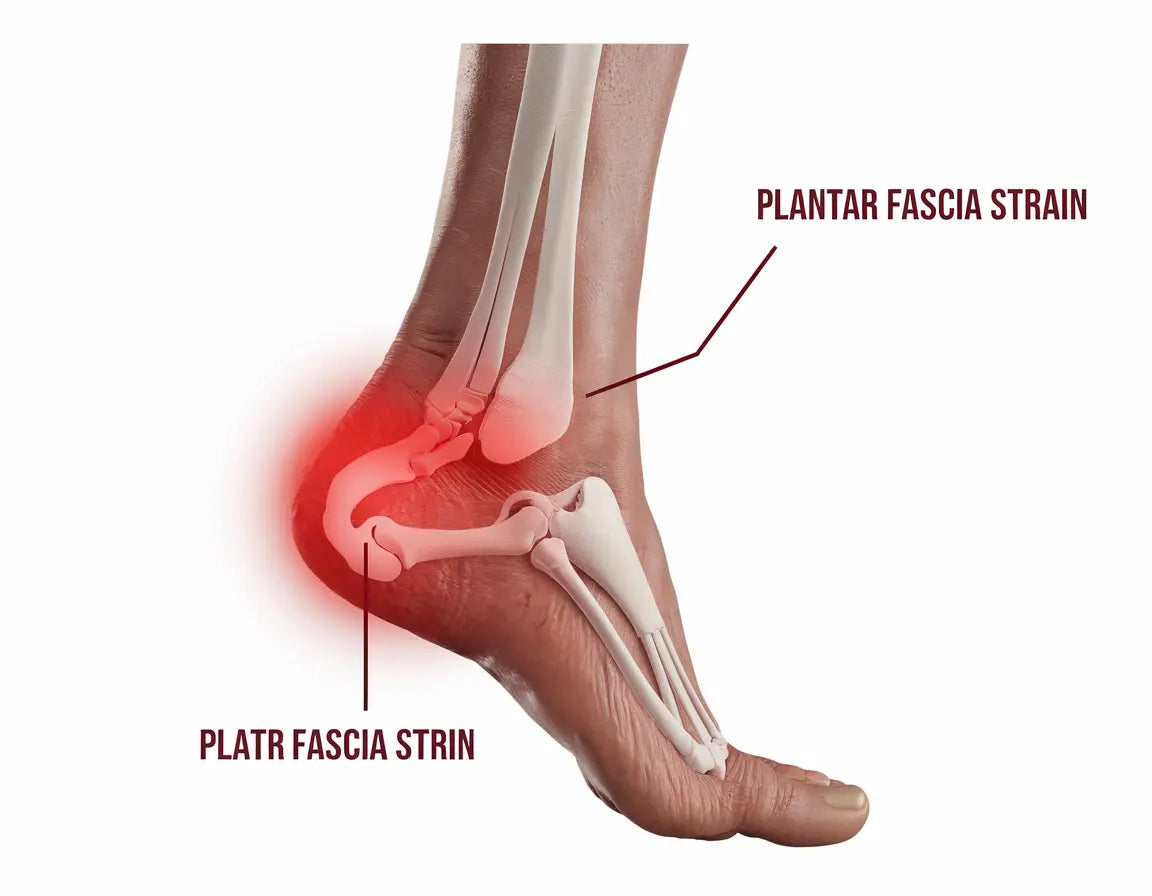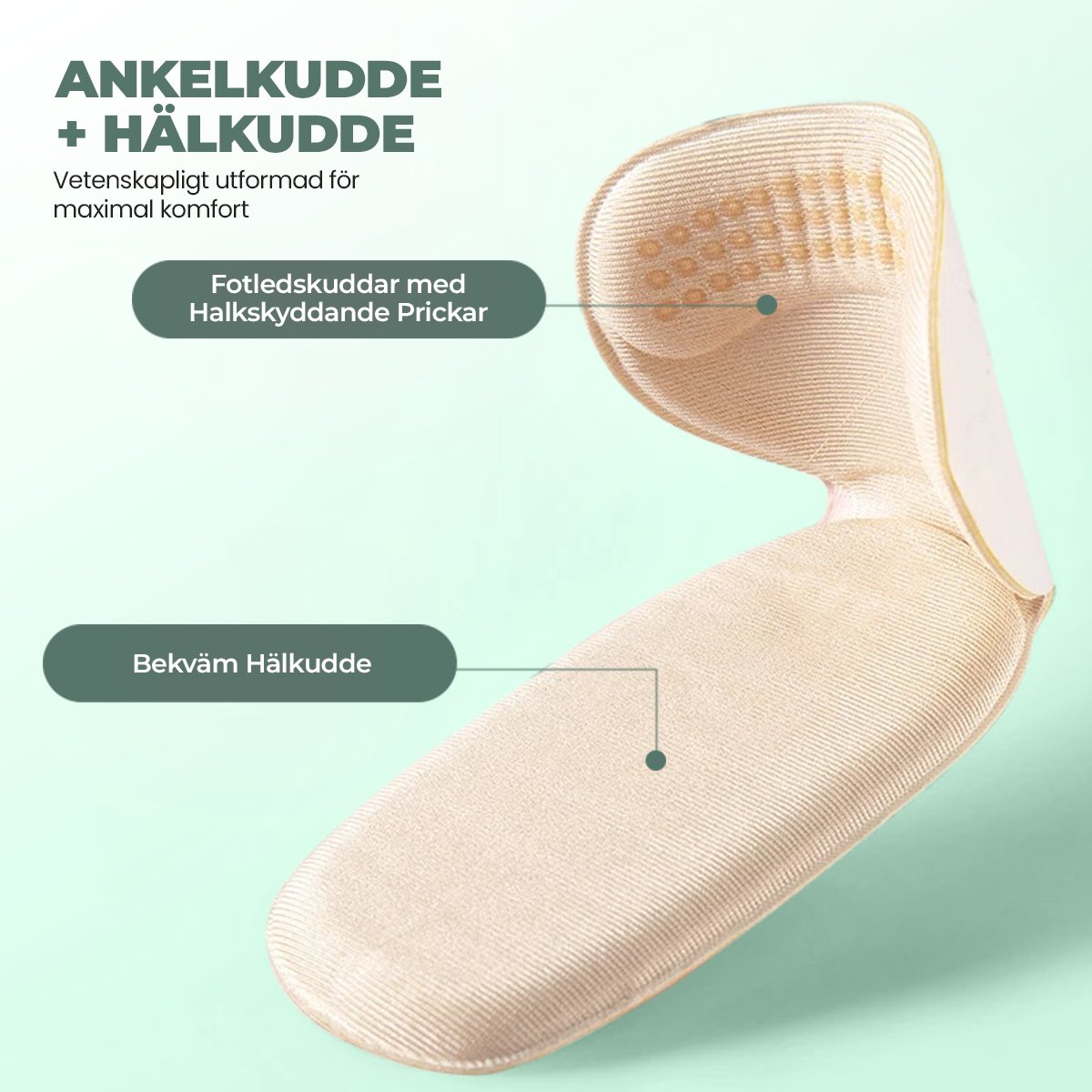Heel Spur: Symptoms, Causes, and Treatment

Heel spurs, also known as plantar fasciitis, are one of the most common causes of pain under the heel. Many people suffer from this painful inflammation of the tendon attachment of the foot, which can significantly affect daily activities and mobility. This comprehensive guide will take you through everything you need to know about symptoms, diagnosis, effective treatment and preventive measures to manage and get rid of heel spurs.
What is a heel spur?
A heel spur is an inflammation of the tendon attachment under the heel, which causes pain and discomfort in the heel area. The name heel spur comes from the fact that a bone spur sometimes forms on the heel bone, but it is the inflammation of the plantar fascia (the tendon under the foot) itself that causes the discomfort. Many people who suffer from heel spurs find that pain under the heel can take a long time to heal without proper treatment for heel spurs .
Symptoms and problems: When the tendon under the foot is stressed
Common symptoms include:
- Sharp pain under or on the inside of the heel
- Pain is worst in the morning or after prolonged rest.
- Increased pain with strain or prolonged standing
- Stiffness in the heel and arch of the foot
- Pain that may decrease after a period of movement
Heel spurs often cause the most intense symptoms during the first steps in the morning or when getting up after sitting still for a long time. The pain may decrease somewhat after walking for a while, but often returns when walking or standing for longer periods. Plantar fasciitis is characterized by this typical pain pattern that worsens after rest, which can be similar to other complaints such aspain under the foot .
Causes and risk factors: Why do you get heel spurs?
Several factors can contribute to the development of heel spurs:
- Overload from prolonged standing or walking
- Inappropriate shoes with poor shock absorption
- High or low arches
- Overweight
- Intense running or jumping on hard surfaces
There is also an increased risk of developing heel spurs if you have a job where you stand a lot, if you have pronation (inward rotation) of the foot, or if the soles of your shoes are too hard. It is important to review your shoes and possibly supplement with shock-absorbing inserts to prevent heel spurs from coming back. Plantar fasciitis occurs when the supporting tendon in the arch of the foot is subjected to repeated stress and tension. Similar stress problems can also contribute to periostitis .
Diagnosis, treatment and when to seek care
Heel spurs, or plantar fasciitis, are a common cause of heel pain. The condition occurs when the tendon at the base of the foot, the plantar fascia, becomes overstretched and inflamed. The pain is often felt most with the first steps in the morning or after rest. Early and proper treatment can speed recovery and reduce the risk of long-term problems.
Rest and stretching
In the case of heel spurs, it is important to reduce the load on the heel to give the tissues time to heal. Stretching the calf muscles and plantar fascia helps to increase flexibility and reduce tension in the foot. Regular rest combined with soft supportive shoes can provide effective relief.
Custom shoes and inserts
Shoes with good shock absorption and heel spur inserts can improve foot position and reduce pressure on the inflamed area. The inserts help distribute the load evenly across the foot, which relieves pain and supports the healing process.
Pain relief
Painkillers, such as ibuprofen or acetaminophen, can be used as needed to reduce pain and inflammation. In some cases, doctors may recommend short-term use of anti-inflammatory drugs to relieve acute symptoms.
Physiotherapy
Physiotherapy can speed up the healing process through individually tailored exercises and manual therapy. The focus is on strengthening the muscles of the foot and calf and restoring normal mobility. For more long-term problems, shockwave therapy may also be considered.
When to seek care
If your pain does not improve after a few weeks of self-care, you should consult a physical therapist or doctor. Professional assessment can identify underlying causes and ensure the right treatment is initiated. Sometimes a combination of treatments is required for best results.

Heel spur treatment: How the right insole and taping relieves pain
Heel spur inserts from Komforten offer several benefits for people with heel spurs:
- Provides support and relief to the heel area
- Improves foot position and shock absorption
- Reduces the strain on the inflamed tendon
- Can be used in different types of shoes for consistent support
- Helps relieve pain and discomfort during daily activities
Taping your heel can also provide good relief. Taping your foot correctly can support the plantar fascia and reduce the strain on the painful spot. You can learn to tape your heel spur yourself or get help from a physiotherapist. Special tape for this purpose is often available at pharmacies. Effective treatment of heel spurs often combines several methods to achieve the best results – as is the case with the management of Morton's neuroma .
Buy nowConclusion: Healing heel spurs with the right treatment and exercises
Heel spurs can be a painful and long-term condition, but with the right treatment and support, most people can effectively manage their symptoms. By combining conservative treatment methods such as rest, stretching, and the use of specially designed heel spur inserts, significant improvements can often be achieved. It is important to be patient, as healing can take time, and to consult a doctor or podiatrist for an individual treatment plan. For arch support and relief when walking, the FotSupporten 2.0 can also be an option.
Regularly performing specific heel spur exercises and providing your foot with shock-absorbing support is often the key to successful treatment. Remember that it can take several months for plantar fasciitis to fully heal, but with proper heel spur treatment, most people can return to normal activities without pain.
Frequently Asked Questions (FAQ)
How long do heel spurs usually last?
- Heel spurs can last for several months, but with the right treatment, symptoms can often be relieved more quickly.
Can I continue to train with a heel spur?
Yes, but it is important to adapt your activities. Try low-impact exercises like swimming or cycling.
How quickly can I expect results with heel spur inserts?
Many people experience some relief immediately, but full effect may take a few weeks of regular use.
Is surgery necessary for heel spurs?
Surgery is rarely considered and only in cases where conservative treatment has not yielded results after a long period of time.
Can heel spurs come back?
Yes, heel spurs can recur. Continued use of supportive inserts and good shoes can help prevent recurrence – as can overuse of the foot .

